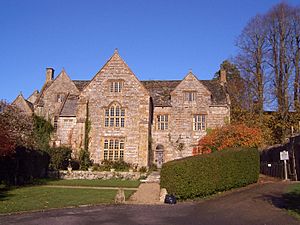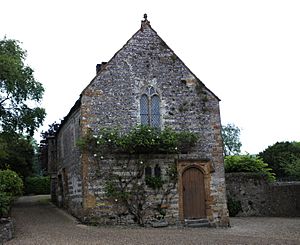Cerne Abbey facts for kids
Cerne Abbey was a special kind of religious home called a Benedictine monastery. It was started in the year 987 in a town now known as Cerne Abbas, in a place called Dorset. A person named Æthelmær the Stout was the one who founded it.
History of Cerne Abbey
Cerne Abbey was founded in 987 by Æthelmær the Stout. A very famous writer of old English, Ælfric of Eynsham, spent time here. He worked as a priest and a teacher at the abbey.
At one point, King Canute attacked the town and took valuable things from the monastery. But later, he changed his mind and became a supporter of the abbey, giving it gifts and help.
By the time the Domesday Book was written (a big survey of England in 1085), the abbey had become much richer. A lot of this wealth came from people respecting and honoring Saint Eadwold of Cerne. He was a hermit from the 800s, meaning he lived alone for religious reasons. People believed he was the brother of Edmund, king of East Anglia. Eadwold lived by himself on a hill about four miles from Cerne.
The abbey's story was mostly peaceful for many years. It didn't have many big, exciting events. However, its history ended on a sad note. The last leader of the abbey, called an abbot, was Thomas Corton. He faced serious accusations about how the abbey was managed and his personal conduct. These accusations were taken seriously. People were sent to investigate, and because of what they found, the abbey was closed down in 1539. This was part of a bigger event called the Dissolution of the Monasteries, when many monasteries in England were closed.
After the abbey closed, most of its buildings were torn down. Today, a building called Abbey House stands where the old gatehouse used to be. It even includes some parts of the original gatehouse. Most of this house was built after a fire in the mid-1700s. The Guest House of the abbey, built in the late 1400s, is also still standing. You can also see a very fancy stone porch from the abbot's hall, built around 1500. It stands in a grassy area. Nearby, there's a barn from the early 1500s. There's also a large barn from the 1300s, which was used to store a "tithe" (a part of crops or income given to the church). This barn was turned into a house in the late 1700s.





